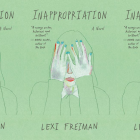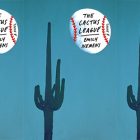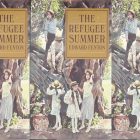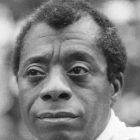William Gardner Smith’s International Solidarity Against Police Violence

Long out of print but forthcoming from NYRB Classics in 2021, William Gardner Smith’s 1963 novel The Stone Face offers the sole literary account written at the time of the French police massacre of Algerian protestors in Paris on October 17, 1961; it was not until the official files regarding the massacre were declassified in 1998 that scholarship and literature began to catch up. A contemporary of James Baldwin, Richard Wright, and other writers in exile—and famously entangled in a strange altercation involving a contested Paris studio apartment lease and forged letters of protest against the atrocities of the Algerian War with Wright, Richard Gibson, and Ollie Harrington—Smith belonged to a small group of Black American artists who left the United States to find relative freedoms in the city around the 1950s.
The Stone Face sees its narrator, Simeon, navigate a newfound form of privilege as a Black American citizen in relation to his Algerian friends living in France, a relationship that contributes to his radicalization and eventual activism. That this book was denied publication in France and still has not been translated into French—unlike many of Smith’s other works—is unsurprising considering the force of its testimony against the systemic racism and violence waged against Algerians not just via the French colonization of Algeria, but also right at home in Paris. As we have seen most recently with the murders of George Floyd, Breonna Taylor, and Tony McDade in the United States, João Pedro Matos Pinto in Brazil, Iyad el-Hallaq in Palestine, and Eishia Hudson, D’Andre Campbell, and Regis Korchinski-Paquet in Canada, police continue to violently murder Black people, indigenous people, and other people of color across the globe. Rising up against targeted brutality and police militarization, Smith’s novel, which alludes to his own life, suggests the power of international solidarity and its impact on domestic struggles.
In the novel, Simeon arrives in Paris after spending his youth frustrated and embittered by the poverty, racism, and violence he endured as a child growing up. The “stone face” in the book’s title refers to the look of coldness on the face of a white boy who blinds him in one eye during a confrontation on the street: “The man who had this face felt no human emotion, no compassion, no generosity, no wonder, no love! The face was that of hatred: hatred and denial—of everything, of life itself.” Simeon continues to see this same look in the eyes of multiple racist white men and police officers in the US and flees the country for France haunted by this image. Once in Paris, he starts a relationship with Maria, a Jewish woman from Poland who is traumatized by the murder of her parents in the gas chambers of a concentration camp. In fairly constant tension with Simeon, Maria attempts to forget her trauma and asks of Simeon to do similarly in order to live what she thinks of as a normal, happy life. Having left the United States to avoid racism, Simeon does try this at times, “but he could not help thinking about race in Paris or anywhere. How can you help thinking about the thing that dominates your life?” Racial injustice and police brutality pervade Simeon’s life both in the United States and France.
Altercations with police officers, mostly targeted at Algerians in France, occur extremely frequently in the novel. The first time Simeon crosses paths with an Algerian man in Paris comes when he sees a police officer beating him mercilessly: “At the corner, they saw a policeman clubbing a man. Although he had fallen to the pavement, the policeman kept on swinging his long white nightstick down on the man, who was trying in vain to protect his head from the blows with his arms.” Simeon, incredulous, asks his friend Babe—another Black man from the United States now living in France—what had happened, to which Babe replies, “The man was probably an Arab. . . There’s a war on in Algeria, remember?”, referring to the Algerian War of Independence from 1954 to 1962 that ended the violent French colonial rule. Immediately following this scene, Smith writes a flashback to Simeon’s childhood in Philadelphia, in which two white police officers assault him, threaten him with a pistol, and then take him to the police station, where they beat him up, knock him unconscious, and torture him with a rubber hose after stripping him of his clothes. Linking the police brutality of the French on Algerians with that of the US police on Black people through the proximity of these initial scenes, Smith introduces the bond of solidarity that Simeon feels with the Algerians as he learns more about their subjugation in France and the parallels to his own experiences in the United States.
His next interaction with Algerians comes when Simeon attempts to intervene when he thinks a man is assaulting a woman on the street. When Simeon is proved wrong, the police have already arrived and proceed to arrest the Algerian man despite Simeon’s protests. The police reveal their racism to Simeon as if he is their compatriot, saying, “You don’t know how they are, les Arabes. Always stealing, fighting, cutting people, killing. They’re a plague. . . . A night in jail is letting them off easy.” Simeon later forges a friendship with a small group of Algerian revolutionaries who heard about his confrontation with the police after one of them calls to him from a cafe, “Hey! How does it feel to be a white man?” The Algerian man explains himself by recalling a trip to the United States: “I remember how it was back there. If a white man fought a black man, the black man was guilty, the white man was innocent. Just like that. I remember. How does it feel to have the roles reversed, eh? How does it feel to be the white man for a change?” Simeon ends up befriending this man, Hossein, and a few other Algerians. They run into the police time and time again, once for an unannounced but routine humiliating police raid on the overcrowded Algerian rooming house in which Hossein lives, and another when Simeon takes his friends to a club and a fight breaks out because the other patrons do not want Arabs in their midst. As their relationship strengthens, Hossein encourages Simeon to return to the US to revolt like the Algerians or to join independence movements across Africa. Though Simeon initially expresses his discomfort with both options, his bond with Hossein and his friend pushes him increasingly toward activism.
Amidst these parallels between the Algerian situation in France and Simeon’s experience in the United States, and the many rich scenes of political debate about identity politics in which Smith rejects un-nuanced perspectives and opinions we might today call out as “oppression Olympics” between Arabs, Jews, and Black Americans, one scene in particular stands out with incredible historical impact. The last chapter of the book details the October 17, 1961 mass demonstration against the French government’s curfew on Algerians, a peaceful protest that quickly turned into a massacre in which the Paris police murdered an estimated 200 Algerians. It is referred to as the “single bloodiest event in the history of postwar France” in Tyler Stovall’s preface to the novel. That the sole literary account of this massacre written at the time is found in a novel by a Black American points to the huge significance of international solidarity, especially in colonial contexts, which often specifically attempt to erase voices of the colonized and write the history of conflicts to favor the oppressors.
Smith—who was also a journalist—takes care to write precisely the events of the demonstration and massacre, details of which have been corroborated by later historical and personal accounts. In the first paragraph, he points out the direction by the Algerian National Liberation Front that the demonstration was to be peaceful and orderly, and “that no one was to carry a weapon, not even a stick or a pocket knife.” He describes how “more than thirty thousand Algerians came out of their bidonvilles and tumbledown suburbs” to the key centers of Paris, rejecting the urban segregation of Paris, which is largely still in effect today in the banlieues. One paragraph details the horrifying police violence of the massacre:
Theoretically, French police charges were aimed at splitting demonstrations into small pockets, and dispersing the demonstrators; but it was clear that tonight the police were out for blood. While ‘combat groups’ charged, other ranks of police stood behind in each street, blocking escape routes, armed with clubs and submachine guns. The charges split the Algerians into small pockets; each pocket was then surrounded by police who methodically clubbed men, women and children. Simeon saw old men clubbed after they had fallen to the ground, someties [sic] by five or six policemen at a time, their bodies beaten after the men were dead. In scenes of terrible sadism, Simeon saw pregnant women clubbed in the abdomen, infants snatched from their mothers and hurled to the ground. Along the Seine, police lifted unconscious Algerians from the ground and tossed them into the river.
When he sees a policeman beating a woman trying to protect her baby, Simeon suddenly recognizes the stone face of racism he knows from America in the officer’s eyes, and he jumps to aid the woman, beating the police officer. This moment marks a significant personal victory for him—after he and thousands of Algerians are rounded up and thrown in a stadium like cattle, he reflects: “What would happen to him? He did not care. . . . That didn’t matter; what mattered was that he had struck at the face.” By finally standing up in the Algerian demonstration to the face of racism that had tortured his life, Simeon is able to confront the feeling of duty which troubles him throughout the novel: he decides to give up what was for him a guilt-ridden separation from American racial inequality in France and return to the United States to fight for justice. Smith himself actually went on to work as a news correspondent and editor in Ghana, spent some time in Algeria, and finally moved back to join the Civil Rights movement in the United States, mirroring and expanding Simeon’s trajectory.
Inspired by the activism he met abroad, Simeon’s return to the United States after participating in and documenting the October 17, 1961 massacre is just one testament to the many strengths of international solidarity and exchange between social justice and independence movements. As Smith would likely have been the first to point out, however, solidarity movements are not without flaws and many layers of nuance. Often, as Smith’s novel shows, this results in the reductive tendency to compare levels of oppression between groups as a competition rather than showing up where it is most needed regardless of personal benefit. This indicates a failure of solidarity and ignores the complexity of context and legacies of Atlantic slavery, imperialism, and settler-colonialism which cannot be compared. Instead, understanding the connections between these oppressive mechanisms is important in order to begin the work of their dismantling. While there is much to improve in how we support each other at home and across the globe, Smith’s novel reminds us of the immense power in solidarity and our duty to always rise up for justice and freedom.
This piece was originally published on June 3, 2020.



